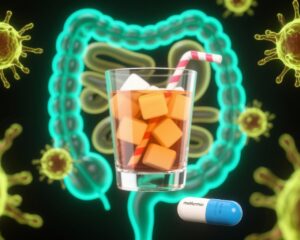Introduction: Challenging the Myth of ‘Moderate Drinking is Healthy’
For decades, many have embraced the belief that moderate alcohol consumption benefits health, especially by improving blood circulation and “softening” blood vessels. However, a growing body of authoritative research is dismantling this longstanding myth. China offers a particularly sobering context: recent large-scale epidemiological data spotlight the severe health risks that alcohol poses to Chinese men, sounding an urgent alarm to society.
What the Data Tell Us: Alcohol’s Dire Health Impact on Men
A landmark study published in The Lancet analyzed data from 28 million people worldwide, revealing that alcohol-related causes contribute to 2.8 million deaths annually. Globally, alcohol is the seventh-leading factor driving death and disability. In China alone, 700,000 deaths each year are linked to alcohol, with over 90% of these deaths occurring in men (approximately 650,000 individuals).
Even more striking is the finding in younger men aged 15 to 49: alcohol has become their top cause of death, far surpassing other modifiable risk factors.
Supporting this, a collaborative long-term study by Peking University and Oxford University followed 512,000 Chinese adults over 12 years (41% of whom were men). The analysis showed a clear, dose-dependent positive correlation between men’s weekly alcohol intake and the risk of developing 61 different diseases. Put simply, the more alcohol consumed, the higher the likelihood of disease.
Specifically, regular male drinkers had a 30% increased risk of alcohol-related cancers and a 39% higher risk of liver cirrhosis. When weekly alcohol intake increased by 280 grams (equivalent to about half a kilogram of baijiu or six bottles of beer), the risk for 28 diseases directly linked to alcohol rose by 22%. Crucially, Mendelian randomization analyses on data from over 500,000 people across 50 countries dismantled the previously held notion of a J- or U-shaped curve relating alcohol consumption and disease risk — which suggested that light drinking had the lowest risk. Instead, researchers identified a strict linear relationship: any alcohol consumption elevates health risks, and these risks scale with the quantity consumed.
Additional data reinforce this conclusion: every 100 grams of alcohol consumed per week increases male mortality risk from cardiovascular diseases by 15%, liver disease by 31%, all-cause mortality by 7%, and deaths from alcohol-related cancers by 12%.
These findings firmly dismantle the belief that “moderate drinking protects health,” particularly for Chinese men. Any alcohol intake carries health risks.
Long-Term Abstinence: Visible and Significant Health Benefits
Alcohol has long been classified by the World Health Organization as a Group 1 carcinogen, confirming its undeniable cancer-causing potential in humans. Beyond cancer, alcohol harms virtually every organ system.
Encouragingly, research demonstrates that quitting alcohol results in significant, rapid health improvements, particularly for men with long-term drinking habits. Here are four key physiological changes after quitting alcohol:
1. Liver Recovery and Restored Vitality
Over 90% of alcohol metabolism occurs in the liver, which bears the brunt of alcohol-related damage. Chronic drinking overloads the liver with toxic metabolites like acetaldehyde, leading to fat accumulation (alcoholic fatty liver), cellular damage, fibrosis, and ultimately cirrhosis or liver cancer. Stopping alcohol reduces this metabolic strain immediately, activating liver self-repair. Studies show that mild fatty liver reverses within 1–3 months of abstinence, and even early cirrhosis can regress with sustained abstinence over six months to a year, with liver function improving substantially.
2. Digestive System Restoration
Alcohol irritates and damages the gastrointestinal lining, causing gastritis, ulcers, and elevating gastric cancer risk by impairing the mucosal barrier. It also inflames the pancreas and triggers pancreatitis, sometimes progressing to chronic pancreatic dysfunction. Upon quitting, the stomach lining repairs, inflammation subsides, and symptoms such as abdominal pain and acid reflux improve. Pancreatic function also gradually normalizes, decreasing pancreatitis risk and improving digestion and blood sugar regulation.
3. Brain Function Improvement
Less appreciated is how alcohol silently damages the brain over time. Approximately 80% of people with alcohol use disorder show cognitive decline, including memory loss, poor attention, and slowed reactions. Prolonged drinking can cause irreversible conditions like alcohol-related dementia and cerebellar degeneration due to neural cell loss. Abstinence halts ongoing neural injury and activates repair processes. Early benefits include clearer focus and better memory, with long-term abstinence significantly improving cognition and lowering dementia risk.
4. Reduced Mortality from Multiple Diseases
A study published in The Lancet Public Health reviewed health outcomes of over 24 million adults and confirmed that compared to continued drinkers, abstainers had approximately 40% lower risk of alcohol-related cancers like liver, stomach, and esophageal cancers. They also had reduced mortality risks from cirrhosis and cardiovascular diseases, collectively contributing to longer and healthier lives.
In essence, quitting alcohol cuts illness risk dramatically and improves both lifespan and quality of life.
Practical Advice: Four Key Tips for Those Who Drink
While abstinence remains the safest choice, some men may find social or occupational drinking unavoidable. To mitigate harm, consider the following:
1. Avoid Mixing Different Types of Alcohol or Carbonated Drinks; Slow Down Drinking
Mixed drinks and alcohol with carbonated sodas increase alcohol absorption and intoxication speed, overwhelming liver metabolism and irritating the digestive tract, leading to quicker intoxication and higher health risks. Choosing a single type of beverage and sipping slowly helps the body process alcohol more effectively.
2. Never Pressure or Be Pressured to Drink
Alcohol affects everyone differently; some react adversely even to small amounts, and those with conditions such as hypertension or heart disease face serious risks. Respecting personal limits protects health and lives.
3. Never Drink on an Empty Stomach; Always Eat Before Drinking
Food slows alcohol absorption and cushions the stomach lining from direct irritation. Eating protein-, fat-, or carbohydrate-rich foods like eggs, meat, dairy, or grains before drinking significantly reduces intoxication severity and liver strain.
4. Prevent Aspiration During Intoxication
Alcohol-induced vomiting can lead to choking and aspiration pneumonia if positioning is incorrect. Always position intoxicated individuals on their side (preferably right lateral) to keep airways clear and prevent inhalation of vomitus. Clean the mouth frequently and seek emergency care if consciousness or breathing deteriorates.
Case Vignette: John’s Journey from Heavy Drinking to Health Restoration
John, a 45-year-old businessman, had consumed alcohol socially for over two decades, frequently drinking multiple beers after work. Following episodes of fatigue, indigestion, and mild memory lapses, he underwent a health evaluation revealing fatty liver and elevated liver enzymes.
Motivated by recent studies and medical advice, John committed to quitting alcohol. Within three months, repeat tests showed reduced liver fat, improved digestion, better concentration at work, and enhanced well-being. A year later, his liver function nearly normalized, and he reported increased energy and cognitive clarity, illustrating the tangible benefits of alcohol cessation.
Conclusion
Robust scientific evidence now unequivocally shows that alcohol consumption—at any dose—increases the risk for a wide spectrum of diseases and premature death, particularly among men in China. The myth that moderate drinking protects health is firmly debunked. On the contrary, complete abstinence, or at least minimizing consumption, leads to significant health improvements, from liver and digestive recovery to brain function restoration and reduced mortality.
For those unable to abstain completely, adopting practical harm-reduction measures can mitigate alcohol’s damage. Greater public awareness and proactive clinical counseling are essential to combat alcohol’s burden on health worldwide.
References
1. Griswold MG, Fullman N, Hawley C, et al. Alcohol use and burden for 195 countries and territories, 1990–2016: a systematic analysis for the Global Burden of Disease Study 2016. Lancet. 2018;392(10152):1015-1035.
2. Zhou M, Wang H, Zeng X, et al. Mortality, morbidity, and risk factors in China and its provinces, 1990–2017: a systematic analysis for the Global Burden of Disease Study 2017. Lancet. 2019;394(10204):1145-1158.
3. Millwood IY, Walters RG, Mei XW, et al. Conventional and genetic evidence on alcohol and vascular disease aetiology: a prospective study of 500,000 men and women in China. Lancet. 2019;393(10183):1831-1842.
4. World Health Organization. Global status report on alcohol and health 2018. Geneva: WHO; 2018.
5. Rehm J, Shield KD. Alcohol and mortality: from association to intervention. Lancet Public Health. 2020;5(5):e241-e242.
6. Lee HP, Lee ST. Alcohol and liver disease. Hepatobiliary Pancreat Dis Int. 2018;17(1):11-16.
7. Oscar-Berman M, Marinković K. Alcohol: effects on neurobehavioral functions and the brain. Neuropsychol Rev. 2007;17(3):239-257.
8. Roerecke M, Rehm J. Alcohol consumption, drinking patterns, and ischemic heart disease: a narrative review of meta-analyses and a systematic review and meta-analysis of the impact of heavy drinking occasions on risk for moderate drinkers. BMC Med. 2014;12:182.


